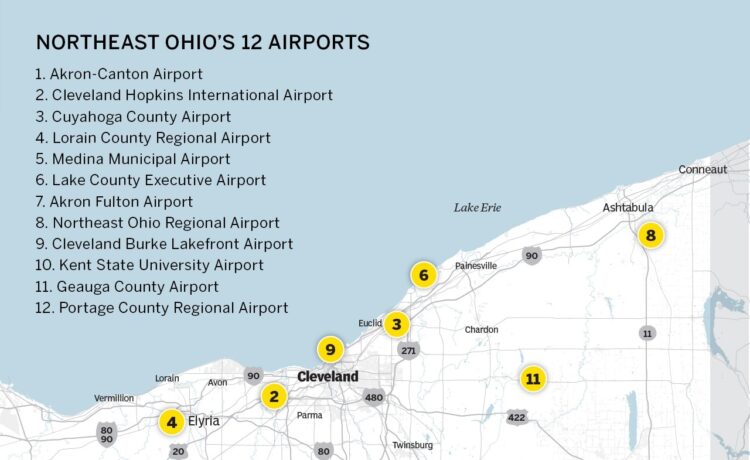CLEVELAND HEIGHTS, Ohio — Yes, whatever public monies are to be raised for the next iteration of Cleveland Browns Stadium should come from the taxpayers of the region – Cuyahoga and the adjacent six counties, if not more. The team’s home is a regional amenity; finance it as such. And also weaken the detrimental hold that lines on a map have on our civic mindset.
And while I’m on regionalism, there are other advancements that would foster economic growth and community stability, particularly as climate change affects Northeast Ohio:
· Establish a regional airport commission.
· Establish regional economic growth-sharing.
· Re-establish seven-county planning.
Certainly, that’s a hefty agenda. Give it 10 years to gel.
Airport commission: Cleveland Hopkins International Airport is no longer a hub, but air traffic is critical for the region’s economic future. Establish a commission to oversee the region’s dozen airports for maximum benefit. A transformational step would be for Cleveland to sell Hopkins to the commission and use the proceeds to improve neighborhoods.
Growth-sharing: The region is what produces economic investment and growth, not individual communities. Westlake did not create Crocker Park; the purchasing/renting power that exists in the region did. Yet, Westlake gets the benefit in the growth of its tax base.
If Intel Corp. were to announce it was considering locating a computer chip plant in Northeast Ohio for which it needed a thousand acres, places that had such land would compete for the tax benefits to come –- irrespective of which location might be best from a regional perspective.
In the current situation, communities that lack vacant land – notably, built-out suburbs – can only watch as land-rich places grow in tax base.
The region’s power to shape its future is severely handicapped by the inherent competition among elected officials. No official is elected to cooperate across jurisdictional boundaries; all are elected to protect and, if possible, to expand their community’s tax base; all are caught in the dynamic of winning or losing.
But the impacts of climate change call for serious cooperation. The current national pattern of droughts, fires, coastal erosion, etc., suggests that the Great Lakes territory will be spared the worst. If so, households and businesses will move our way. Our challenge will be to capitalize on these opportunities and cooperatively advance the region as a whole. This can be accomplished by sharing growth in real estate value.
In growth-sharing, change in property value for every jurisdiction in the region over a specified period, such as three years, is documented. Places that had an increase keep, say, two-thirds of it in their tax base while one-third is placed in a tax-base pool to be distributed to communities that had less or no increase. Amounts are triennially determined through a numerical, predetermined formula.
Over time, as economic conditions evolve, a jurisdiction might shift back and forth between contributor and receiver. And over the long term, tax-base disparities between jurisdictions are lessened as fully built communities are supported by those that have development. Officials are incentivized to cooperate as all places gain from development irrespective of its location. (The Minneapolis-St. Paul region has successfully operated such a system since 1971.)
Seven-county planning: Planning in our region is carried out at three levels: local jurisdiction, county, and multi-county. In 1969, Cuyahoga and the adjacent six counties were joined in a big-picture planning organization (the Northeast Ohio Areawide Coordinating Agency) focused on the use of federal and state funds for transportation improvements, mainly roads and highways. In 1974, a dispute caused Portage and Summit counties to withdraw and form their own unit. Because roads and highways profoundly affect the location of development and thus tax bases, the two units should reunite and function in concert with growth-sharing. For openers, perhaps NOACA could model sharing and demonstrate potential benefits.
Multi-county financing of a renovated or new Browns stadium could be the first step to a fundamentally new future in which all the region’s places are jointly engaged in shaping, and benefiting from, what’s to come.
Thomas Bier is retired from Cleveland State University, where he was director of the Center for Housing Research and Policy.
Have something to say about this topic?
* Send a letter to the editor, which will be considered for print publication.
* Email general questions about our editorial board or comments or corrections on this opinion column to Elizabeth Sullivan, director of opinion, at [email protected].

















